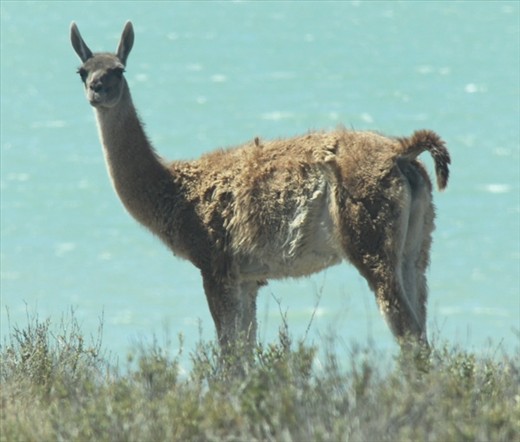A narrow causeway separates the Golfo Nuevo from Golfo San Jose and connects Peninsula Valdes to the mainland. It is theoretically possible to rent a car and visit the World Heritage site on your own but when all is said and done a local tour is probably a better option. It wasn't too expensive and our guide, Daniel, was as enthusiastic as he was knowledgeable about the animals on the peninsula where sheep estancias co-exist with native guanacos and commercial fishing is allowed one scallop at a time. Daniel told us he learned English from his clients, who corrected his mistakes. When he said “identificate” instead of “identify” we let it slide. Cute is more important than correct.

Right whale and calf
Most of the others on the mini-bus were there for the whale-watching trip. This is one of the best places to see right whales up close and personal. Whalers said they were the “right” whales to hunt; they were easy to kill, had lots of oil and even floated when dead. The females and their calves enjoy the calm (usually) and protected bays while the calves grow strong enough for the journey ahead of them. We gave the boat trip a pass. It's expensive, the sea was rough, the boat was tiny and we think we'll seen enough whales in the next three weeks. (As it turns out we saw 8 or 10 pairs this morning right from shore here at Puerto Madryn.)

Guanaco
Our main target on the peninsula were the Magellanic penguins; not the hundreds of thousands that nest an hour south at Puerto Tombo, but enough to give you the idea. One penguin looks pretty much like any other one. There are also colonies of sea lions and elephant seals that can dive deeper and stay down longer than even whales. The three-ton males are long gone chasing sardines to gain back the 1000 kg they lost defending their harems. The young and the females are still lazily lying on the gravel beaches. We also saw mara, giant rabbit-like critters, guanaco, cousins of llamas, armadillos and several new bird species.